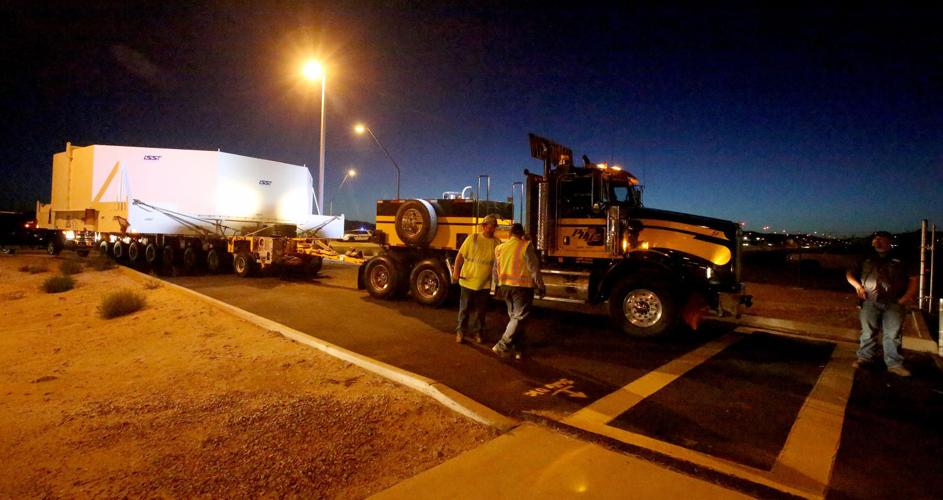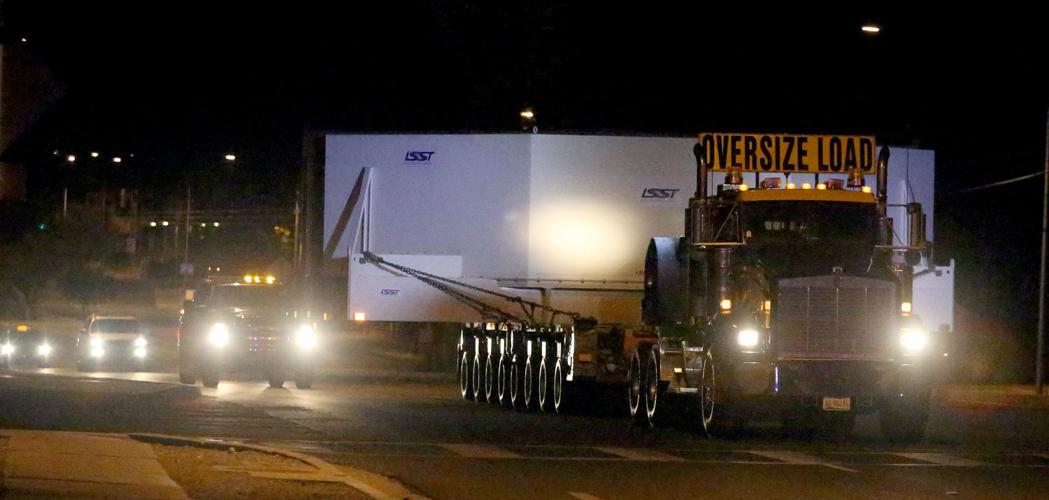How do you move a $20 million mirror?
Very slowly and carefully.
The mirror for the Large Synoptic Survey Telescope moved 8 miles to temporary storage at Tucson International Airport Tuesday morning — a prelude to its journey to an Andean mountaintop in Chile.
There it will take the deepest, widest and fastest survey of the cosmos ever conducted.
Its all-sky survey is expected to aid in the search for the mysterious forces of dark energy and dark matter and uncover new mysteries.
Insurance for the three-hour move from the University of Arizona mirror lab, accomplished before dawn Tuesday, cost $25,000. The mirror is one-of-a-kind and pretty much irreplaceable.
Its 8.4-meter-diameter surface contains both the primary and tertiary mirror for the LSST.
Precision Heavy Haul of Phoenix carried the 30-foot wide, 14-foot tall metal crate, with an overall weight of 112,000 pounds, on a transport bed too big to travel the roads in daylight.
Precision Heavy Haul has previously carried two similar-sized mirrors, tilted at an angle, up the winding mountain road to the Large Binocular Telescope site on Mount Graham.
More recently it hauled a 40-foot radio antenna dish and mount from the Very Large Array near Socorro, New Mexico, to the top of Kitt Peak west of Tucson.
Tuesday’s trip included a tight spot or two, such as south of East 36th Street on South Park Avenue, where the truck slowed to a crawl and workers walked alongside, checking for clearance on signs and hydrants.
The LSST mirror will eventually have a much longer journey.
It will go by ship, from either the West Coast or Houston, to La Serena, Chile, and up a mountain road through a narrow tunnel to its perch on Cerro Pachon, where its enclosure is now in the construction phase.
In August, the National Science Foundation authorized $27.5 million in the current fiscal year and approved an overall construction budget of $473 million.
Construction is expected to be complete by 2019 and the plan is to begin the 10-year survey of the night sky by 2022.






